The History of the Rolex Explorer II, The Ultimate Adventure Watch by The Crown
An update to the legendary 1950s Explorer serves a different purpose, alongside the original exploration watch.
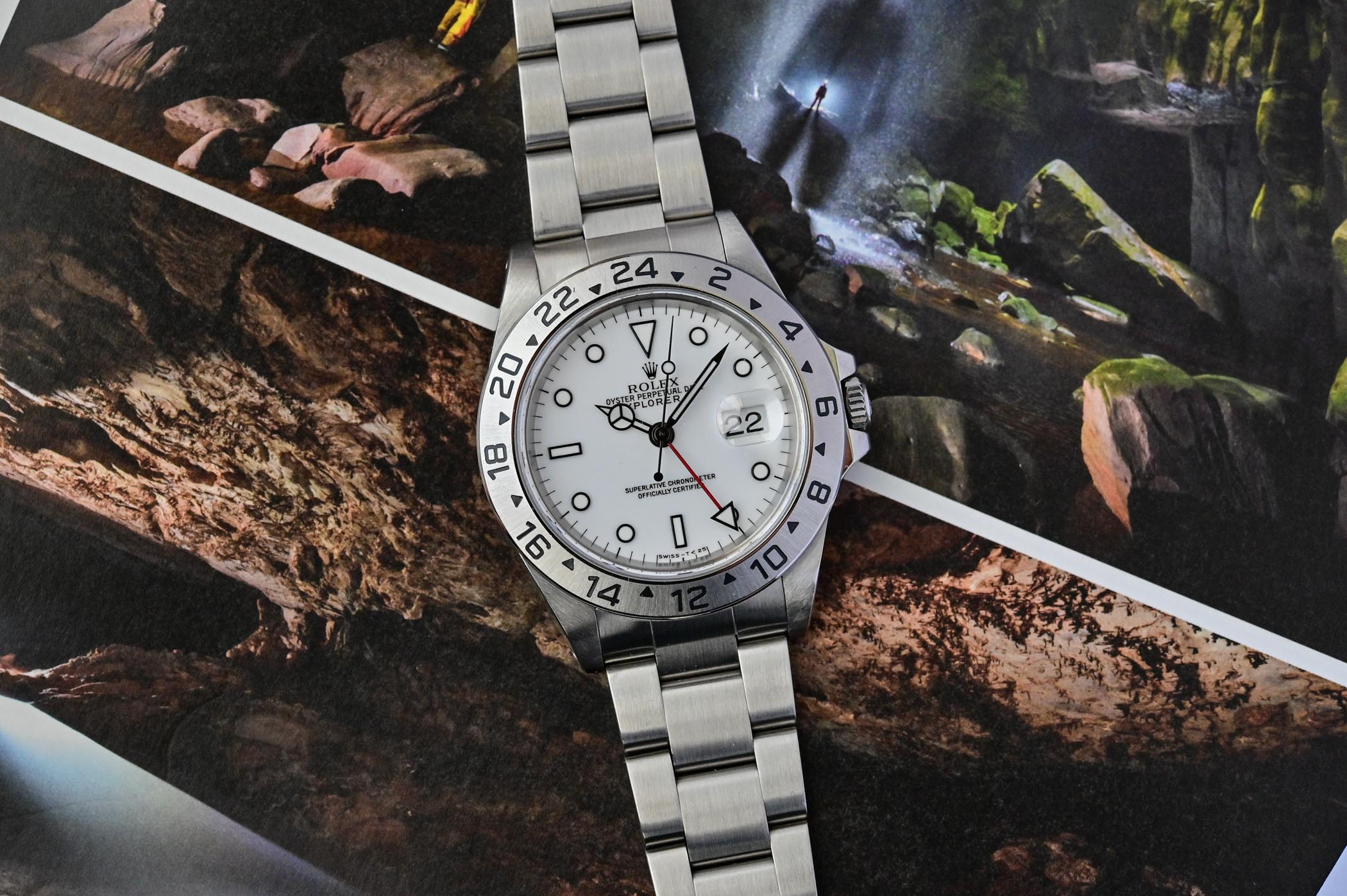
Born in 1953 as a tool watch for mountaineering, the original Explorer (a.k.a Explorer I) is a rugged, time-only piece for just about any occasion. Although relatively unchanged at its core, the Explorer has seen many updates with a dozen or so reference numbers in its 70+ years of existence. The Rolex Explorer II launched in 1971 and didn’t replace the original, but complemented it as a more feature-packed tool watch for spelunking. The main difference was the addition of a 24-hour bezel and 24-hour hand to distinguish between day and night when time spent in caves often blurred those lines. Appearances were deceiving, however, as it wasn’t a GMT watch – not yet, at least.
The First Explorer II, ref. 1655 (1971 – 1984)
Unlike a true GMT watch (or even an office GMT), the additional 24-hour hand couldn’t be set independently or separated from the standard hour hand. Both were synched together as the additional arrow-shaped hour hand simply followed the 24-hour scale on the fixed bezel. It was nothing more than an advanced day/night indicator, but that would change with future models. The first Rolex Explorer II (ref. 1655) was a stainless steel model like its older brother and featured the aforementioned fixed 24-hour bezel and an orange 24-hour hand, but also came with a date at 3 o’clock with a Cyclops lens.
Why was the early Explorer II often referred to as the Steve McQueen watch? He never actually wore one, preferring the Submariner instead. McQueen was also best known for wearing a TAG Heuer Monaco in the movie Le Mans, while James Bond was the movie icon known to wear a Submariner. The simple answer is marketing – Rolex leveraged McQueen’s image to try and boost ref. 1655 sales. Strange how things work sometimes. This move by Rolex may have originated in Italy but eventually spread worldwide.
In the early 1970s, it wasn’t feasible to put lume on an external bezel as it could easily be damaged and become ineffective. To work around this, as the watch was intended for use in darkness, Rolex added an extra offset index between the hours on the dial to help distinguish where the 24-hour numerals fell on the bezel: 24 tritium marks in all. One just needed to remember that 12, 3, 6 and 9 o’clock were six hours apart on the 24-hour scale. The addition of the date was a bit curious as it strayed from the focused tool watch ethos of the Explorer name, but it also made the piece more versatile for daily wear (away from caves and mountains). After all, we know that most dive watches never actually go diving.
The hands against a matte black dial were unusual for Rolex as they were a simple stick setup with tritium painted on about 90% of the black surfaces – generally, Mercedes hands dominated the portfolio (including on original Explorers at the time). An oversized inverted triangle was painted with tritium at 12 o’clock, while large indices were painted at 6 and 9 o’clock (the date removed the index at 3 o’clock). The original straight seconds hand was painted white without lume but was soon replaced by a lollipop design with a tritium aperture. The second (non-GMT) hour hand had a large orange triangle filled with lume, which was later changed to red. Almost all have faded over time, so just about every ref. 1655 second hour hand appears orange today. There were some curious decisions made regarding legibility, particularly with the lack of lume on the seconds hand and a date window replacing the 3 o’clock index, but the earliest dial still suited its purpose well – low light exploration.

The Oyster case was larger than the original Explorer at 39mm in diameter (compared to 36mm) and came with a three-link Oyster bracelet. There were also additional crown guards for increased durability. Water resistance was rated at 100 metres, and the original crystals were acrylic, not sapphire. The former might seem less durable by today’s standards, but acrylic was more resistant to shattering than sapphire – important in a cave environment.
Calibre 1575
From the beginning, the Explorer II had COSC-certified automatic movements, starting with calibre 1575 – the same as the Rolex GMT Master, ref. 1675. However, the GMT Master had a rotating bezel for a second time zone. Back in the day, things were a bit fast and loose with this calibre designation. Opening an early Explorer II might reveal 1570 stamped on the movement, which was incorrect but just a quirk in the 1970s. Also, the 1575 was a date-only movement, while the 1575 GMT had the additional hour hand, but this wasn’t always specified at the time. The 1575 series was produced from 1965 to 1981, and the Explorer II variant had 25 jewels, a beat rate of 19,800 vibrations/hour (2.75Hz) and a power reserve of 48 hours. It was based on the earlier calibre 1560 but had a higher beat rate (up from 2.5Hz) and a slightly better power reserve (up from 44 hours).
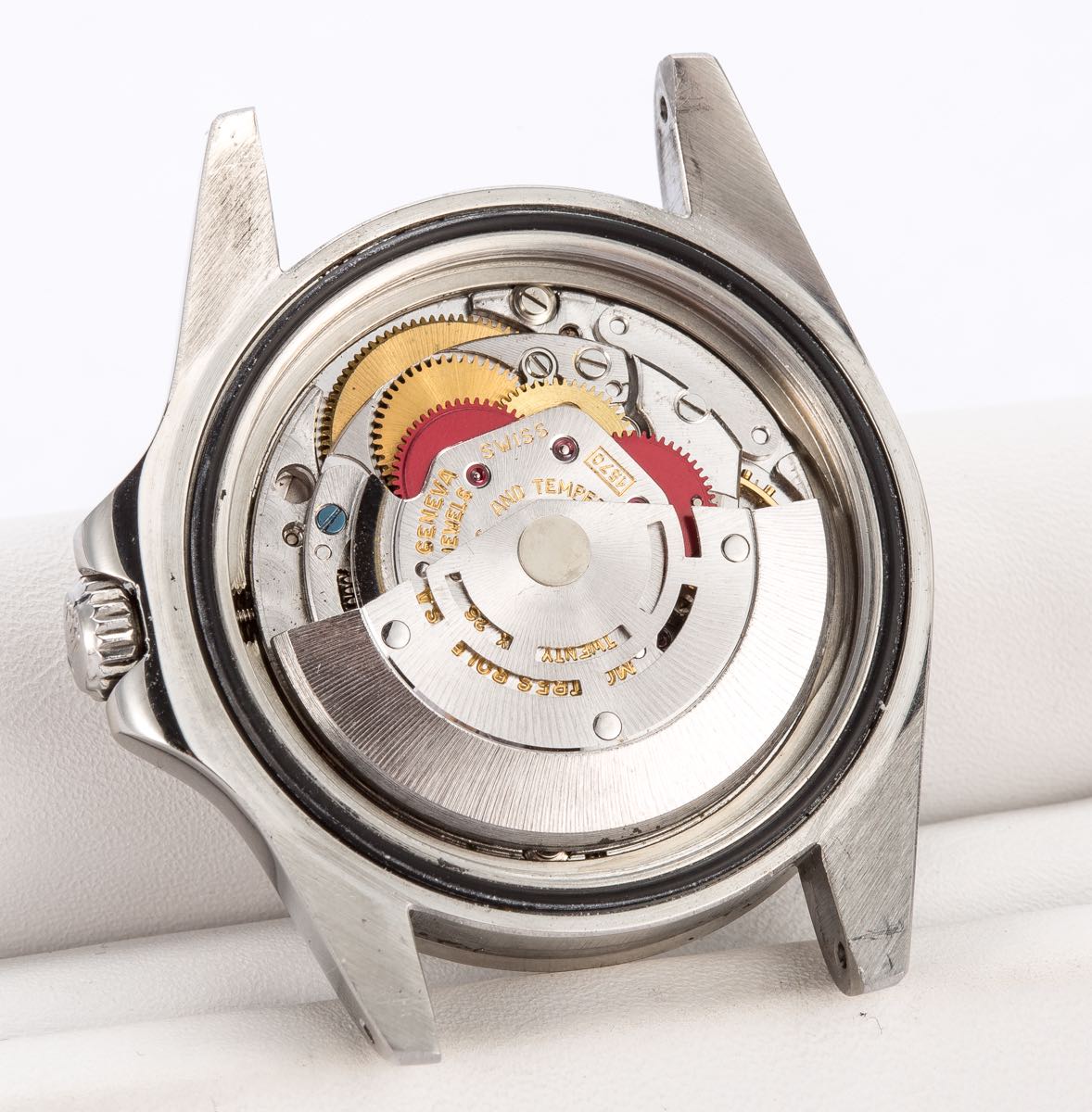
Ref. 1655 Dial Variations
It’s common for Rolex models to have slight differences within a reference number, and the Explorer II is no exception. There were seven dial variants for the 1655, produced from 1971 to 1984, including two “service replacement dials” that were available after production ended (these won’t be specified here). On Mark I dials, a straight seconds hand with no lume appeared in early production models, soon replaced by the more familiar lollipop counterpart with a lume circle. “T SWISS T” was also printed at 6 o’clock on these early models (designating the use of tritium), along with a wide coronet (Rolex crown) and “rounded foot” on the “R” of Rolex.
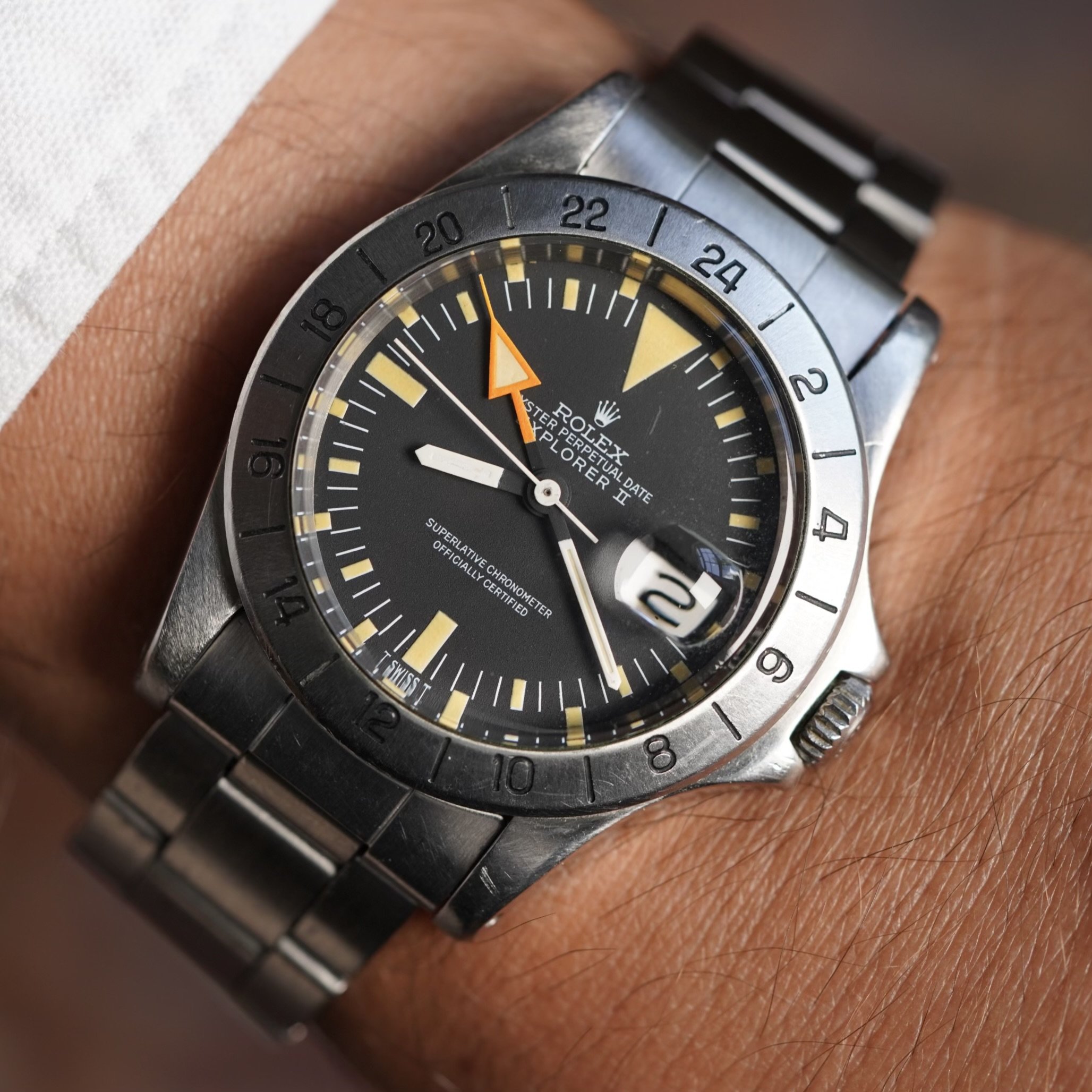
Mark II dials had the “frog foot” coronet (Rolex crown resembling a frog’s foot, also seen on the Explorer 1, ref. 1016). PERPETUAL was also printed differently, appearing a bit narrower than before. Mark III dials had a wider, more symmetrical coronet, and SUPERLATIVE CHRONOMETER OFFICIALLY CERTIFIED was printed differently, now having the “C” of CHRONOMETER and CERTIFIED perfectly aligned to create a vertical space between the upper and lower text lines. This became known as the Rail Dial. Mark IV dials again had a new coronet, this time taller and narrower. T SWISS T was replaced with T SWISS < 25 T in a serif font, designating tritium that emitted less than 25mCi. Mark V dials no longer used serif font for T SWISS < 25 T, and the coronet changed (again) with a larger oval aperture at the bottom and a narrower design. Although the changes were subtle, they are always major differentiations for collectors.
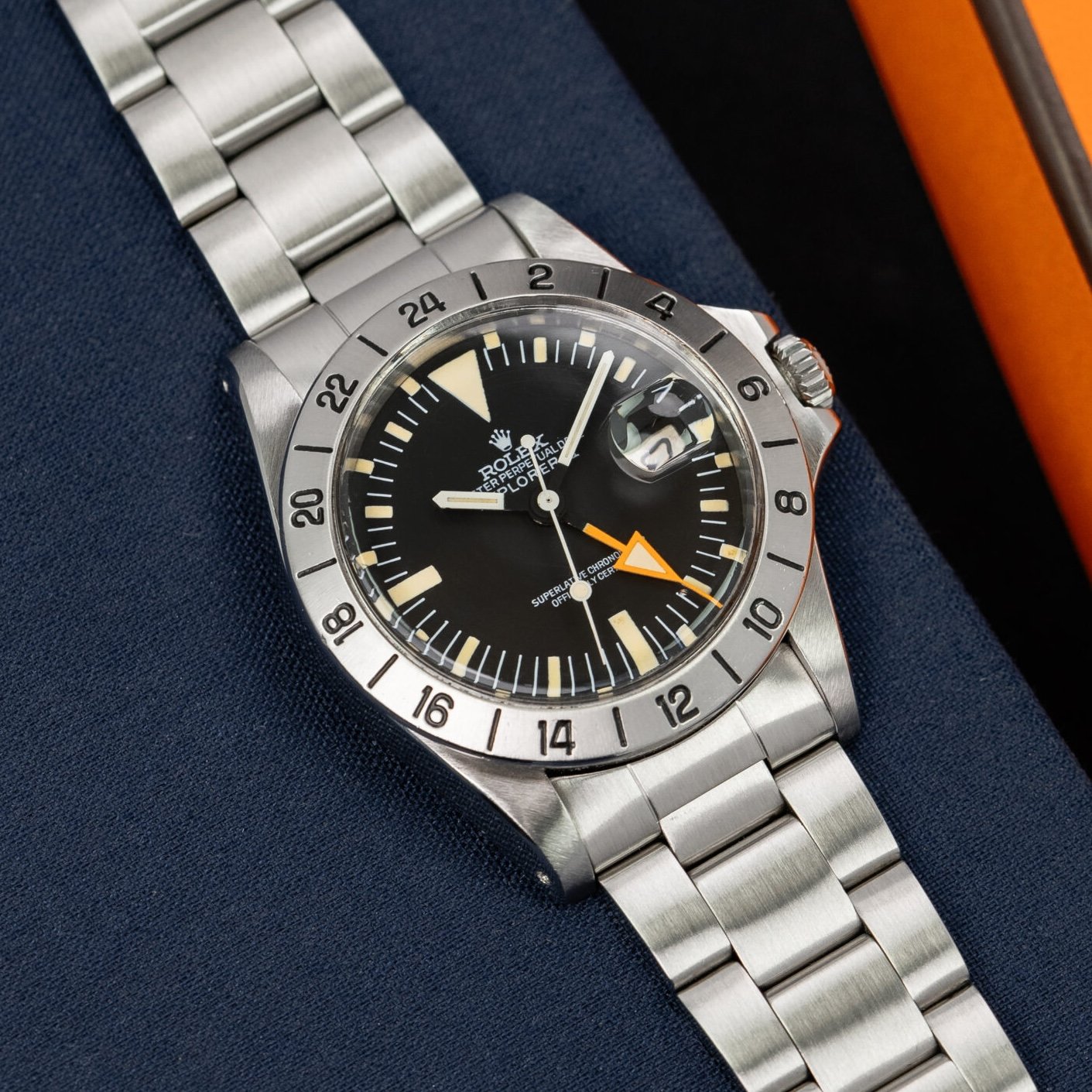
Ref. 1655 Bezel Variations
Mark I and II dial variants had a bezel with thick numerals closer to the bottom edge (not centred). Late models got the centred numerals, but the vast majority were used on Mark III and IV dial variants. A relative handful of Mark III dials got a bezel with thinner numerals (still centred), but the majority of those went to Mark IV dials. The most subtle change came to the Mark V dial variants, where the 1 numeral had a “long hook” at the top.
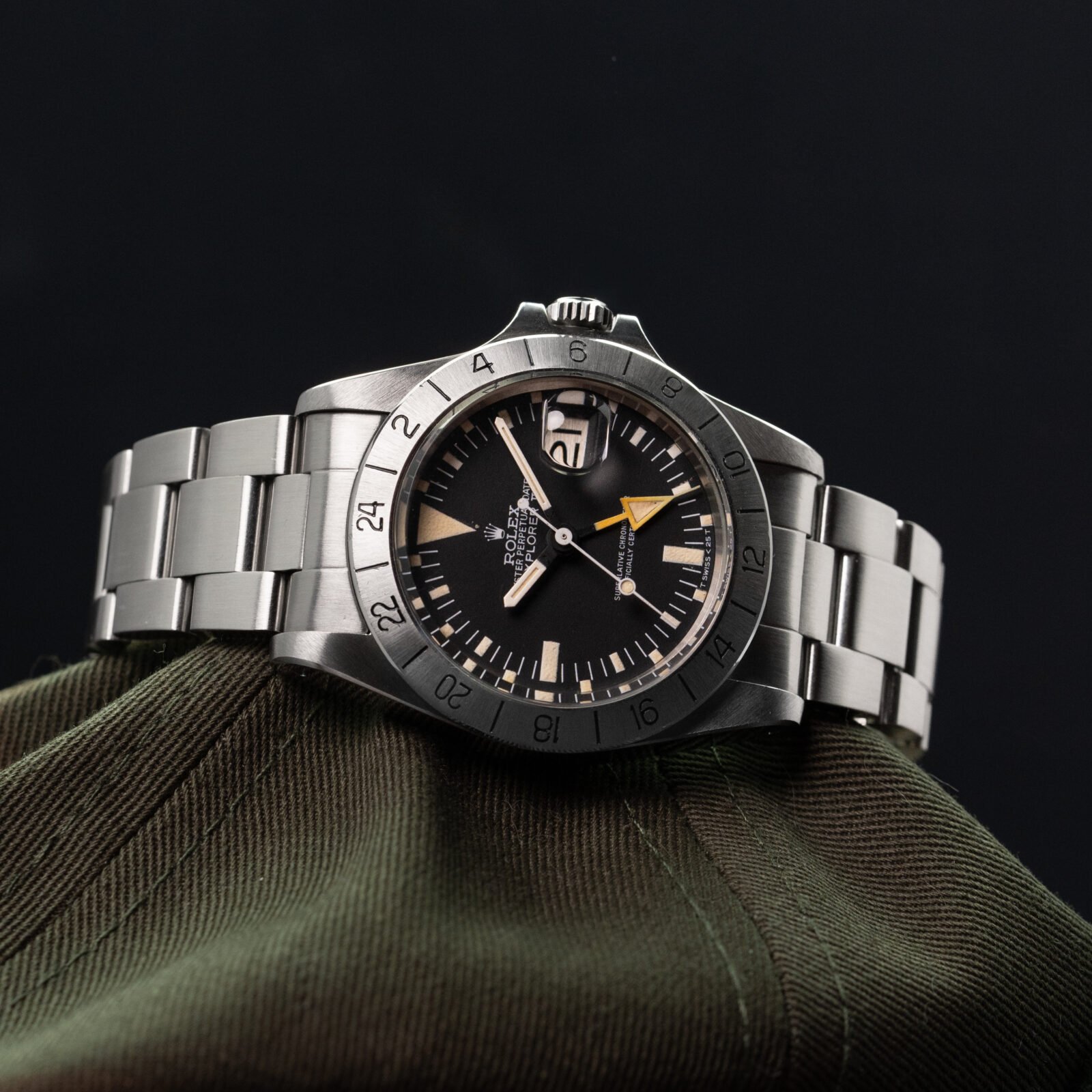
For collectors, early 1655 models are the most desirable, but the crown jewel is a Mark I with a straight painted seconds hand and thick bezel numerals (not centred). Of course, any 1655 variant will be more collectable and expensive compared to recent counterparts. From a usability standpoint, keep in mind that no 1655 models had GMT functionality, which came next.
The Explorer II Ref. 16550 (1985 – 1988)
The next Explorer II model, ref. 16550 is much closer to what we have today. A significant difference is the addition of GMT functionality. The additional hour hand could now be set independently of the standard hour hand, making it a true GMT piece. The bezel, however, remained fixed, so only one additional time zone could be tracked (unlike the GMT Master series with two additional time zones, hence the name). The case also increased to 40mm from 39mm, and the acrylic crystal was swapped with sapphire. The crown guards became a bit larger as well.
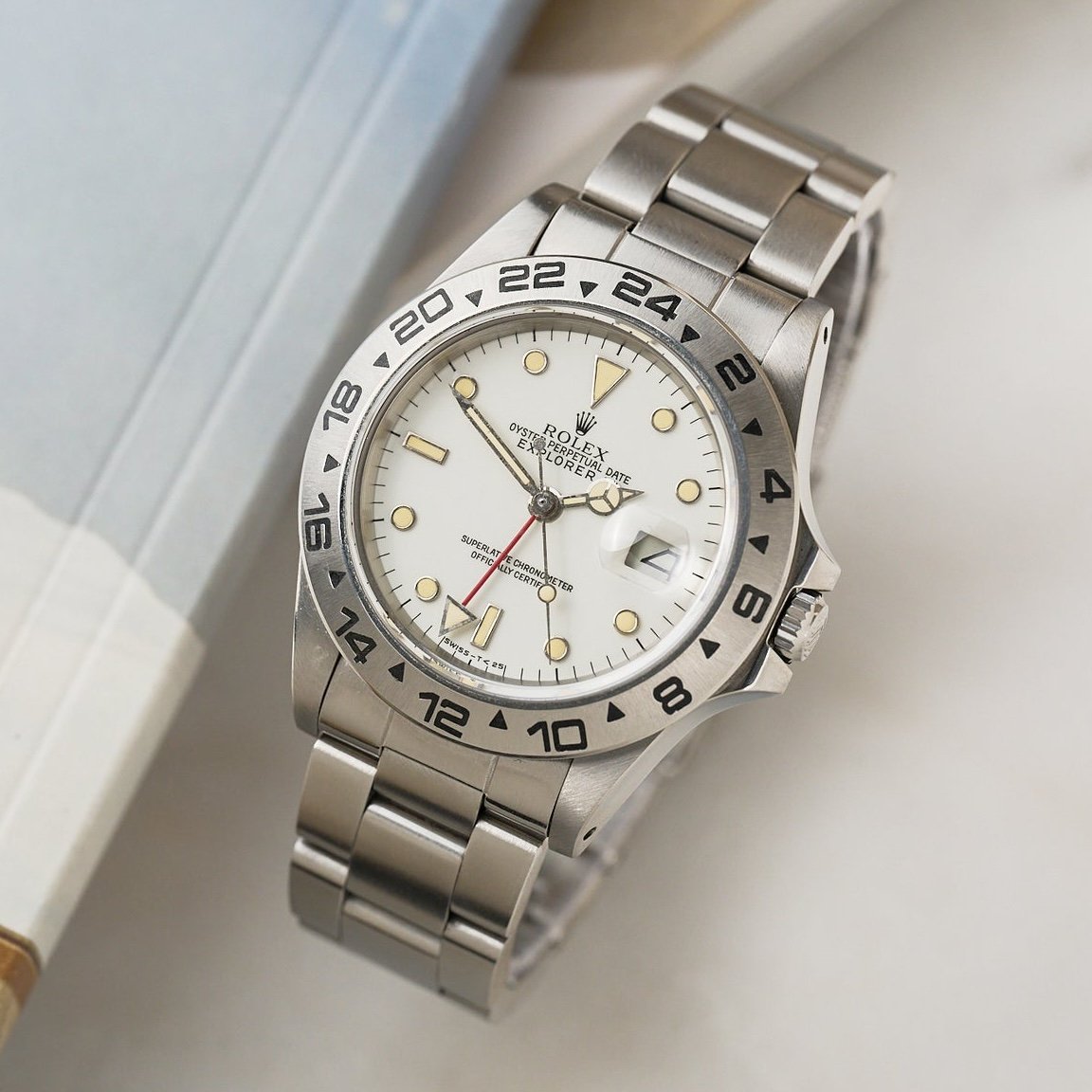
The biggest visual changes were Mercedes hands replacing the straight variants on ref. 1655 dials and an optional white (Polar) dial, while the GMT hand was toned down with just a narrow red stem and no orange triangle. The bezel was a bit wider, too. Taken together, the ref. 16550 Explorer II evolved into a completely different watch, although the core aesthetics remained the same. Looking at the dial, indices were now applied with circles between the bolder rectangles at 6 and 9 o’clock. A large, inverted triangle remained at 12 o’clock, and tritium was still used as lume, again designated by T SWISS < 25 T as seen on the ref. 1655 Mark V dial.
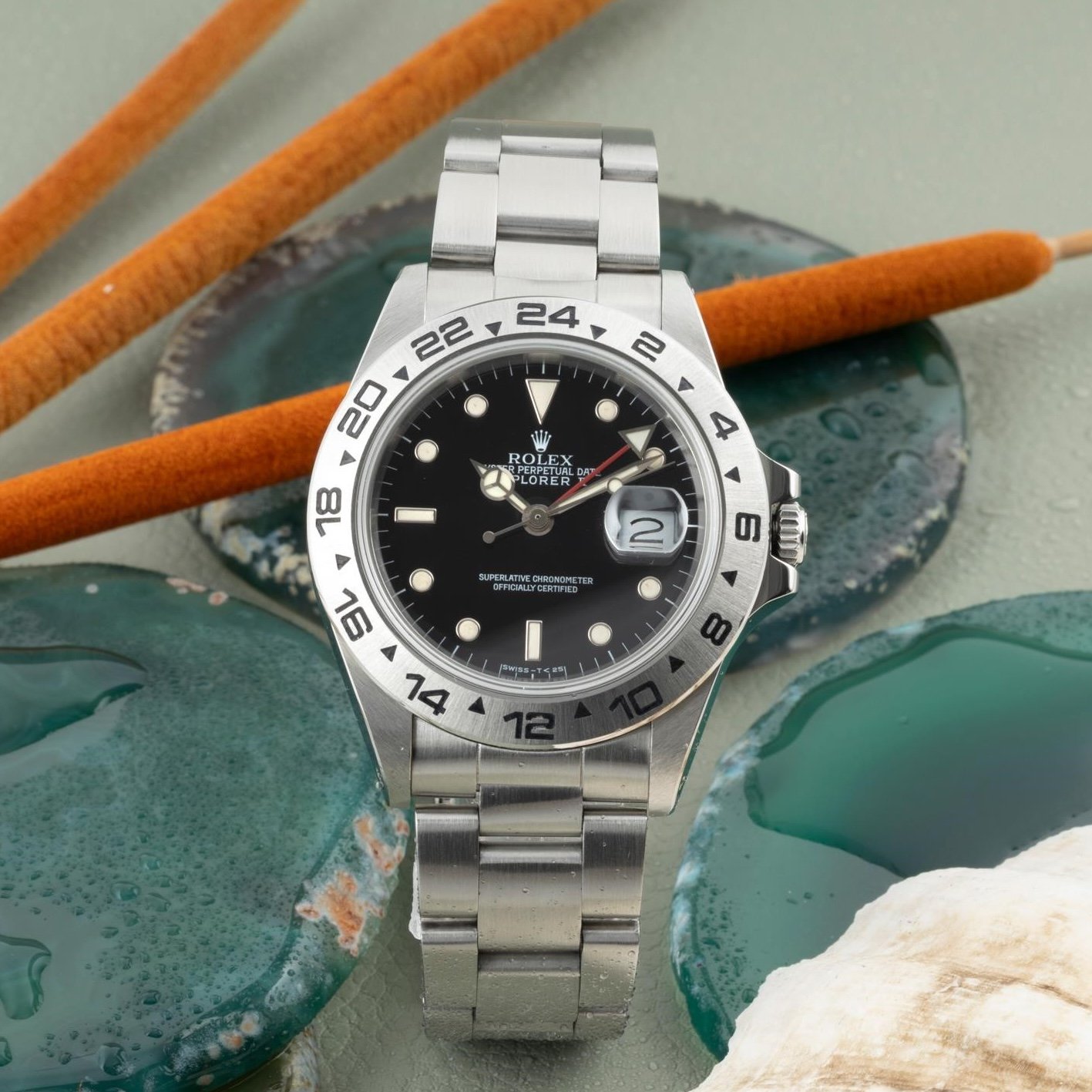
Calibre 3085
This was the first Rolex movement to feature an independently adjustable GMT hand and was initially used for the GMT Master II in 1983. The 16550 Explorer II got it in 1985 but again retained the fixed bezel to differentiate it from Rolex’s flagship GMT models. It had a higher beat rate of 28,800vph (4Hz), 27 jewels, and a power reserve unchanged at 48 hours. It was also surprisingly short-lived, replaced by the thinner calibre 3185 in 1988.
The Explorer II Ref. 16570 (1989 – 2010)
Visual changes were minimal with the Explorer II 16570, as the biggest change was an upgraded movement, calibre 3185 (and later calibre 3186). Tritium was also replaced by LumiNova in the mid-1990s and then Super-LumiNova in the late 1990s. The bottom text changed accordingly to SWISS MADE from T SWISS < 25 T, which is the biggest visual dial change within the reference, together with the font of the 24-hour scale on the bezel. The white dials also changed, gaining distinctive black outlines on the applied indices and hands that were silver on the earlier 16550 models. Although the legibility of earlier Polar dials was excellent, this was a welcome upgrade.
In the mid-2000s, the rehaut featured a ROLEX ROLEX ROLEX engraving to fight counterfeiting, so late models can be easily identified. In addition, the Oyster cases changed from “holes cases” to “no holes cases” during 16570 production so that both types can be found within the ref. 16570 collection with early models having the former setup. This refers to holes at the external ends of the lugs to remove the bracelet pins, whereas newer models had solid external ends and needed a tool between the inner lug and bracelet to retract the pin.
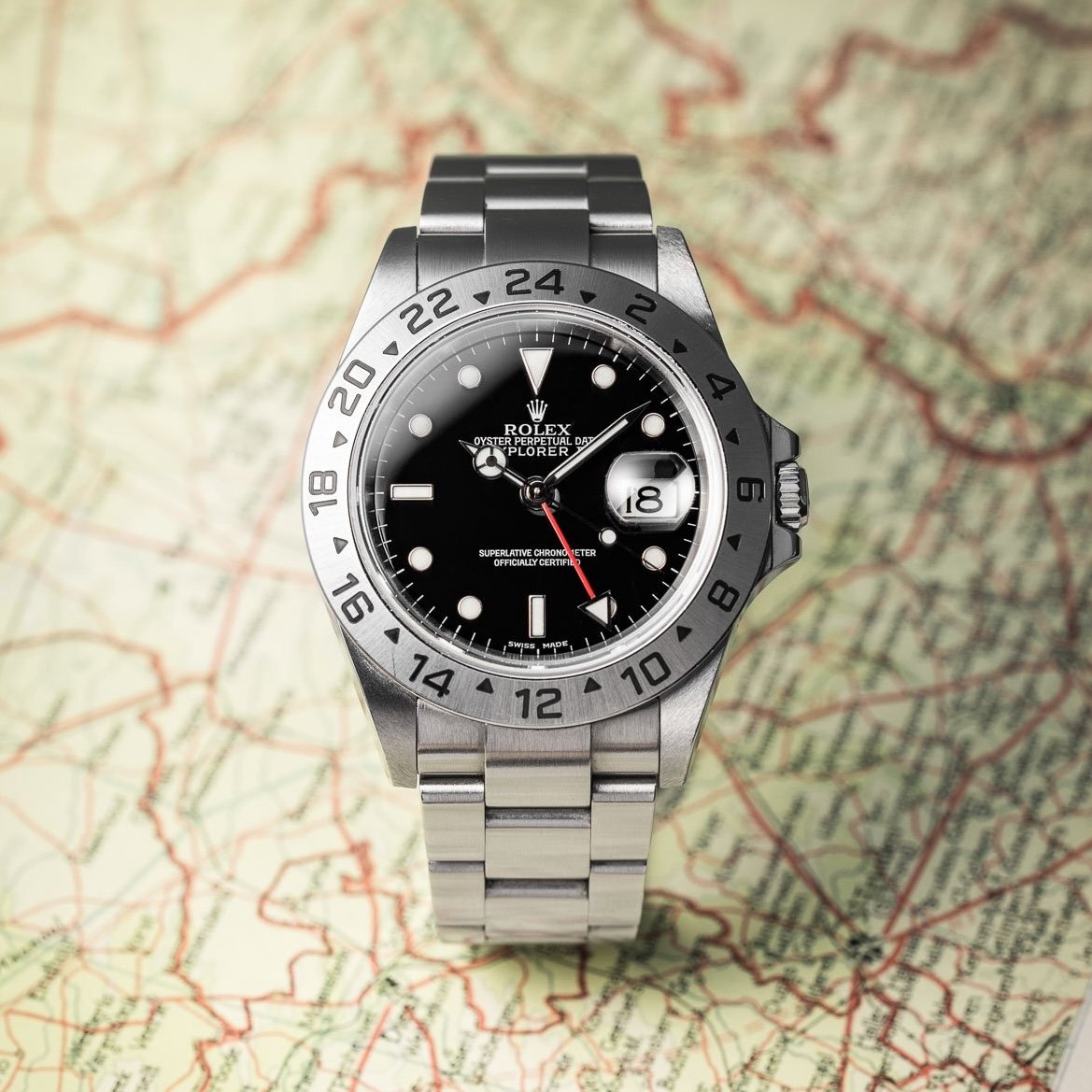
Calibres 3185 and 3186
Changes were relatively minimal between calibres 3085 and 3185, starting with an increase of jewels from 27 to 31. The 3185 was also thinner at 6.45mm compared to 7.2mm, which is why the GMT Master II was often referred to as the Fat Lady, with a thicker case housing the older movement. It’s that GMT Master II that pushed Rolex to revise and refine the movement, but the Explorer II was soon a beneficiary.
The next iteration was calibre 3186, which gained a Parachrom hairspring that offered better shock and temperature resistance. Introduced in 2005, it also gained a bit of power reserve to 50 hours from 48 hours. As is always the case, this hit the GMT Master II first in 2005 but inevitably went to the Explorer II in late 2006.
The Explorer II Ref. 216570 – the Orange GMT Hand Returns (2011 – 2021)
The Rolex Explorer II 216570 marked a significant change to the series and is closest to what we have now. The case diameter increased to 42mm from 40mm, and the striking orange second hour hand (now GMT hand) returned from the original 1971 design. All hands and indices enlarged (quite a bit) to compensate for the larger dial, becoming known as the “Maxi” dial. Of course, these aren’t radical changes, but still significant and represent the most contemporary Explorer II aesthetics. Super-LumiNova was replaced with Rolex’s own Chromalight lume that has a blue glow. All rehauts now had a repeating ROLEX, again a counterfeiting measure. The Explorer II was already a mature piece at this point, so it would seem that ref. 216570 is more or less complete from a visual standpoint. However, who knows what the future holds?

Calibre 3187
The upgraded movement for the 216570 gained Paraflex shock absorbers to go with the Parachrom hairspring but is otherwise nigh identical to calibre 3186 (other than minor modifications like a slightly larger base plate).
The Explorer II Ref. 226570 (2021 – Today)
The prior 216570 models established the most contemporary aesthetic, but the latest 226570 celebrates the model’s 50th anniversary with a few notable changes. Of course, a new movement was fitted (more on that below), and the case got a (tiny) bit thinner (diameter remains at 42mm), the lugs got a bit slimmer, and the bracelet got a bit larger. The Chromalight lume is said to be improved as well, with better longevity in darkness. As far as visual dial changes, a Rolex coronet is now between SWISS and MADE at the bottom. Because, why not? That’s the easiest way to differentiate this model from ref. 216570. The white dial changed just a bit with matte black PVD-coated indices and hands, which is a change from glossy black.
The new Oyster bracelet has the latest Oysterlock folding clasp (to prevent accidental openings) and the Easylink extension system that provides up to 5mm of movement without tools, as seen in the previous reference. This is different from the Glidelock system on the Submariner, which provides much more movement for use over a wetsuit (20mm in 2mm increments). It’s still a great convenience.
Calibre 3285 – Chronergy Escapement
This calibre upgrade is definitely more than incremental as it features the new Rolex Chronergy escapement. This is a modified lever escapement that improves efficiency by around 15%. In layman’s terms, it accomplishes this by reducing the mass of components. The escape wheel is now skeletonized, the pallet fork is smaller/lighter, and its pallet stones are smaller. It’s not quite that simple, however, as the geometry of the escape wheel’s teeth is modified, along with the pallet stones. The poise of the balance wheel also improved by a factor of three – this means the actual balancing of the wheel is better (not unlike how the wheels on a car are balanced). Nickel-phosphorous is used as it’s a paramagnetic material, not quite as anti-magnetic as silicon, but close.
The new Chronergy escapement really helps define Rolex’s latest Superlative Chronometer status as well, which has an accuracy rating of +/- 2 seconds per day, compared to a COSC-certified movement at -4/+6 seconds per day. The power reserve also increased significantly to 70+ hours. Calibre 3285 is a major horological achievement, first seen on the Master GMT II in 2018, and really propels Rolex and the Explorer II into the future.
Collectors
The Explorer II doesn’t have as deep of a history as its older brother, the original Explorer, but there are still over 50 years of production. As mentioned, all ref. 1655 models will be the most desirable for collectors and consequently expensive, particularly the earliest models with the painted (no lume) seconds hand. From a usability standpoint, the next-generation ref. 16550 models are much improved with true GMT functionality. These are still very collectable as production only ran for a few years in the mid-1980s, making them relatively difficult to find. Ref. 16570 is probably the best series for enthusiasts as it’s still different than current models (40mm case, no orange GMT hand, early models had tritium, the rehaut was free of ROLEX on the majority and so on), but had a long production run of over two decades. Earlier 16570 models will be more desirable and expensive, but for those that want a collectable Explorer II, any variant of this reference in nice condition should do the trick.
If you’re after a modern 42mm piece, the latest ref. 226570 is best as the Chronergy escapement is a bona fide leap from the prior 3187. That said, any 42mm model will provide a comparable overall experience, and only the most seasoned Rolex enthusiasts will know the difference visually. If you want to save some money and still sport the newest aesthetic, go for a more reasonably priced ref. 216570 and enjoy. Most will think it’s fresh from the showroom floor.

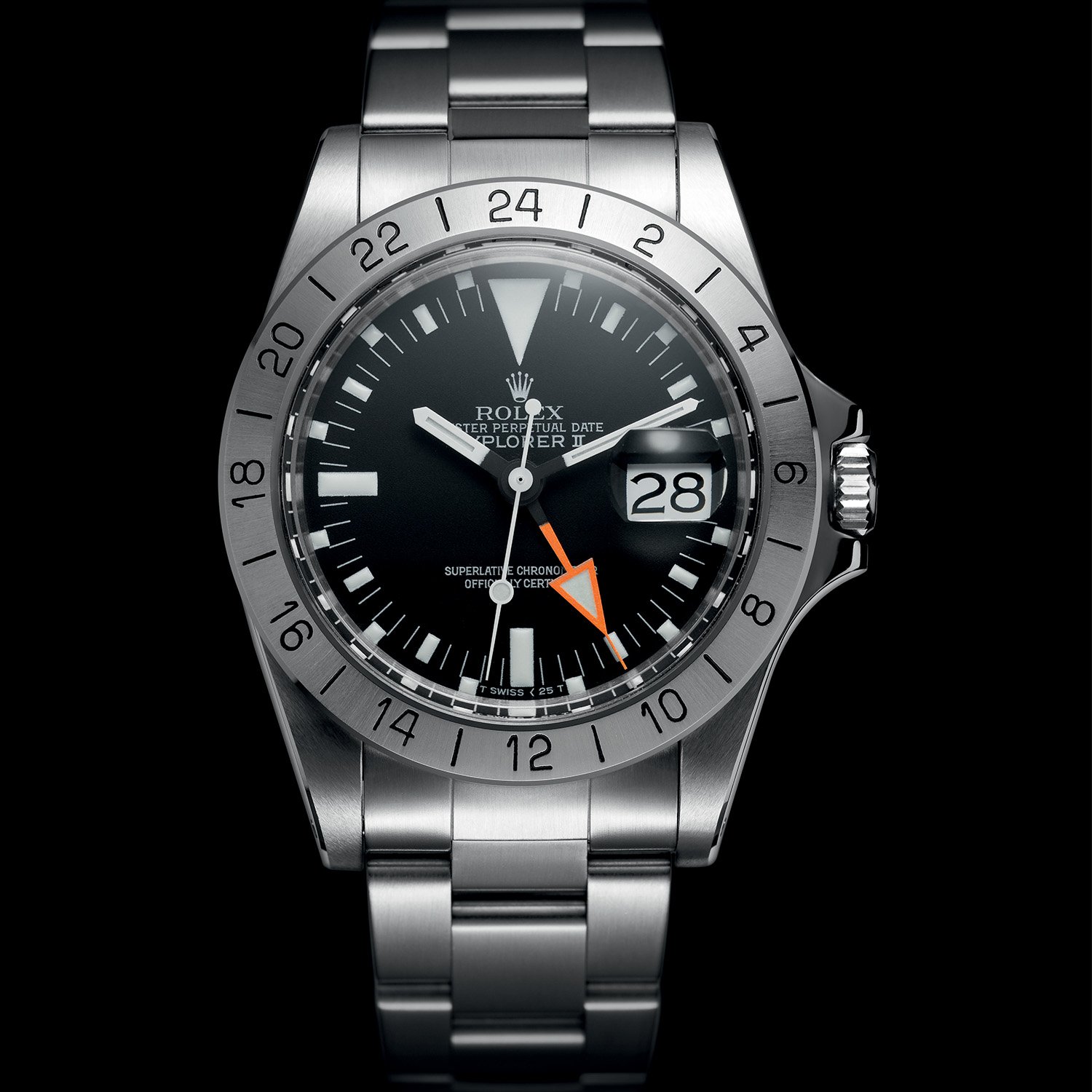
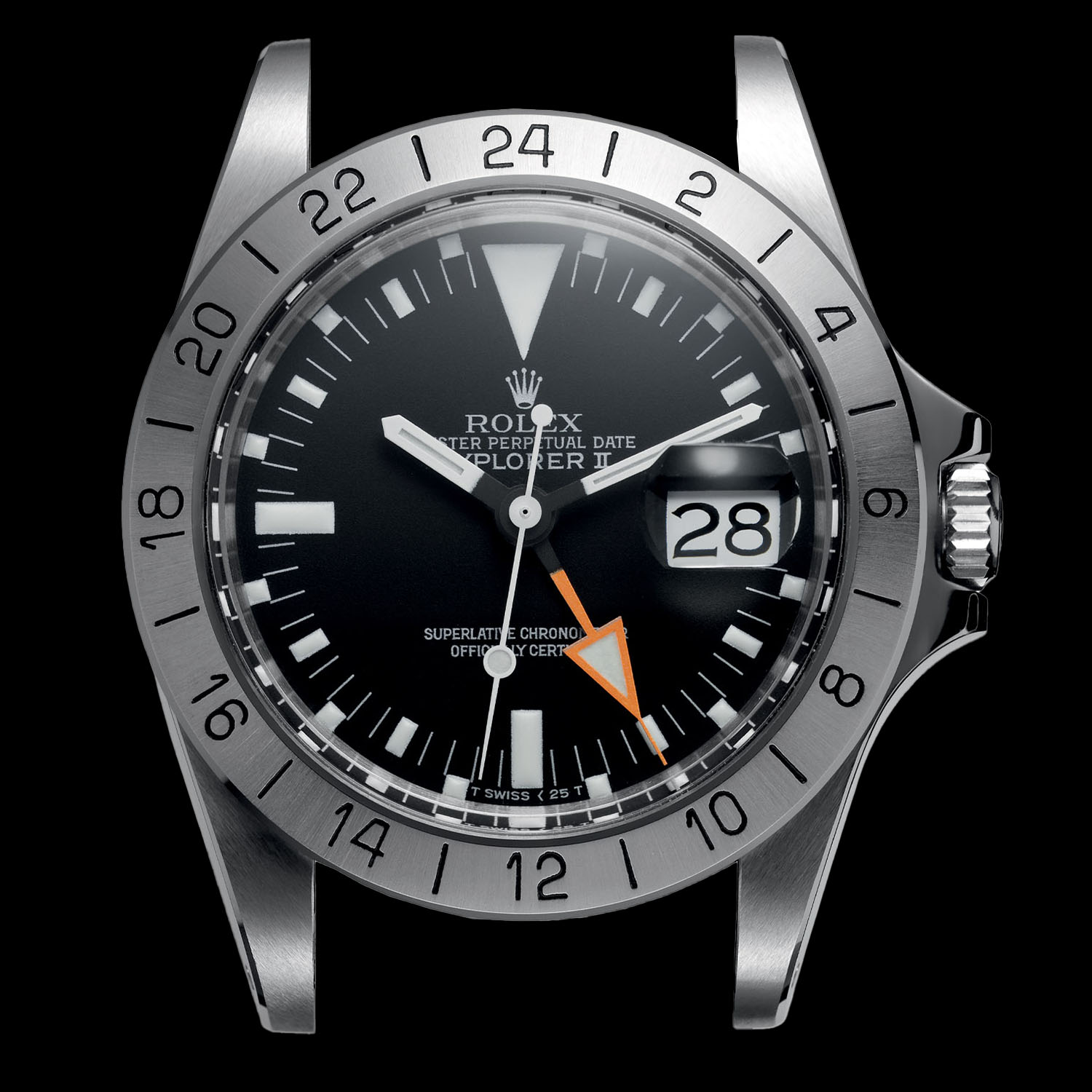
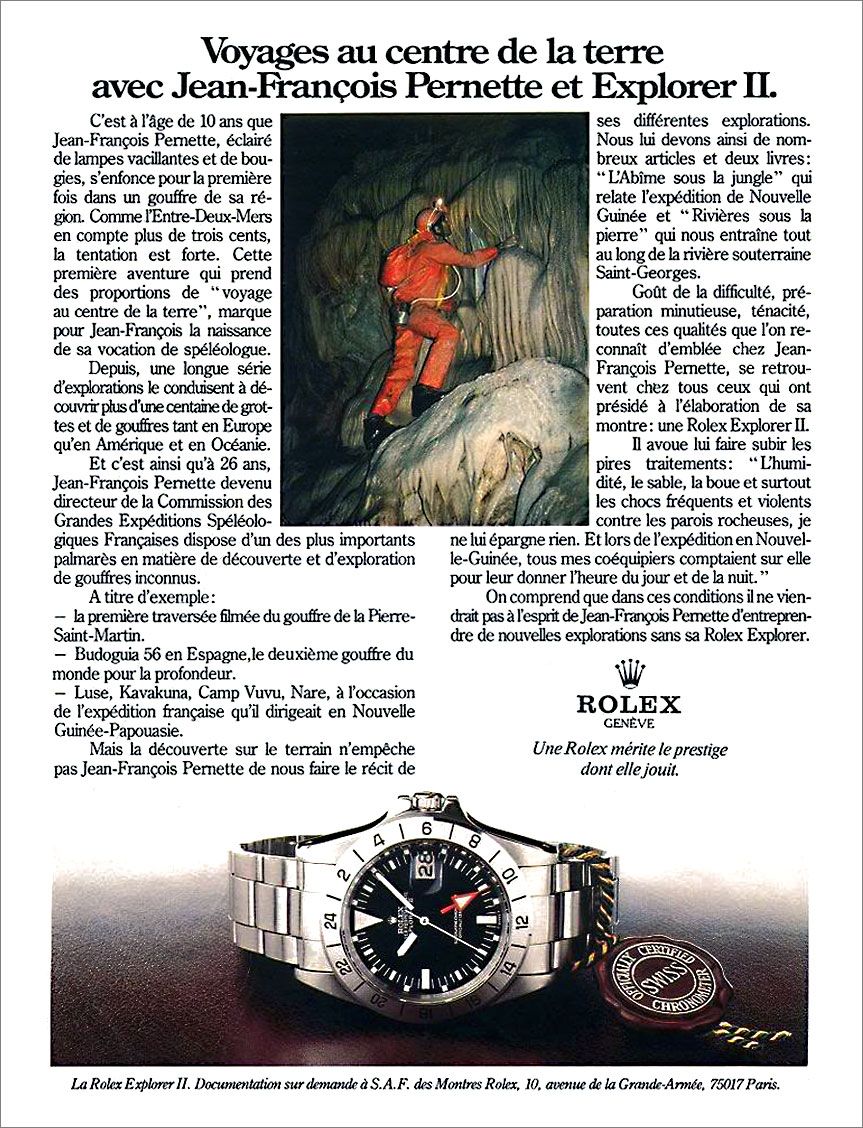
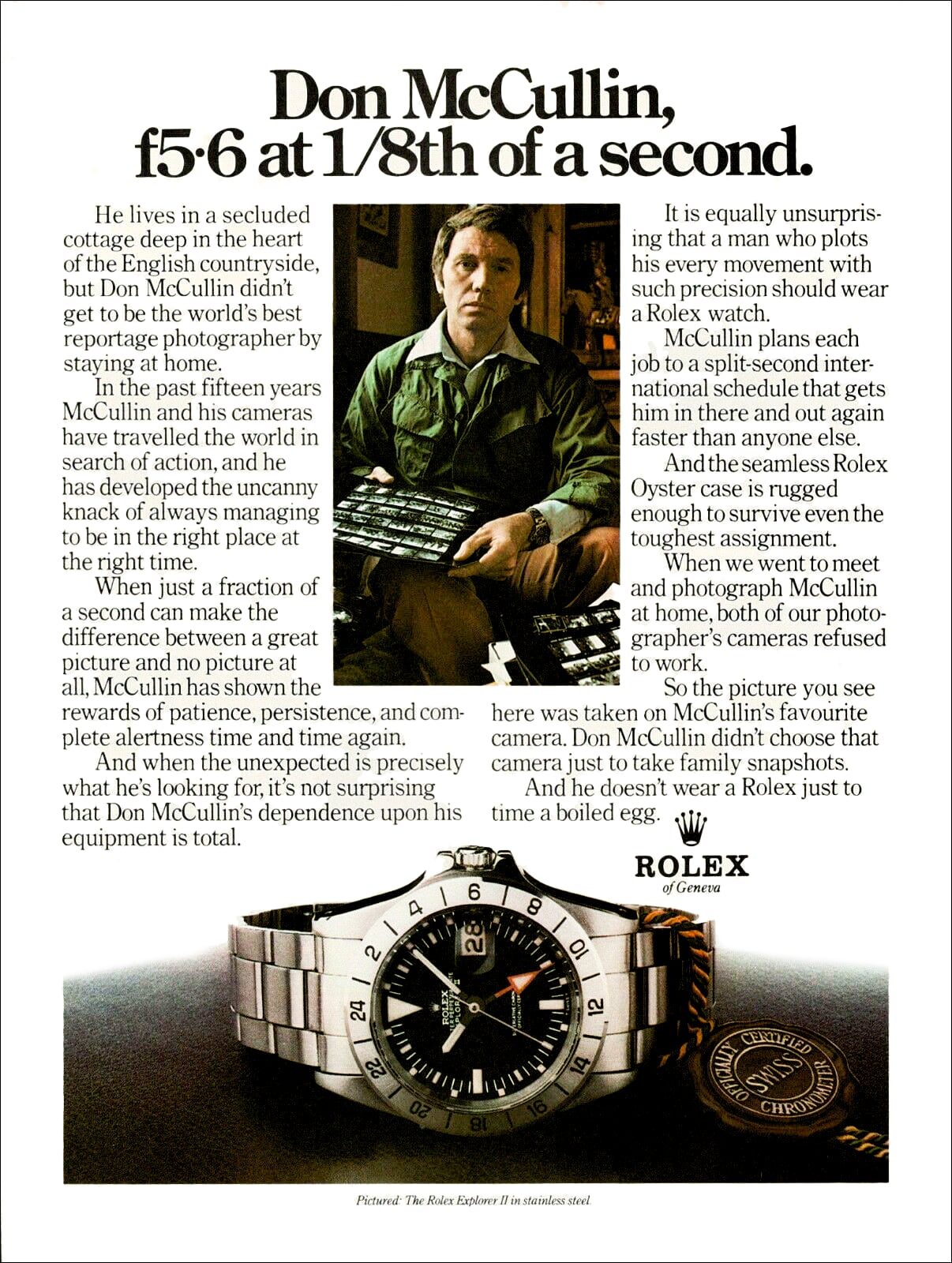
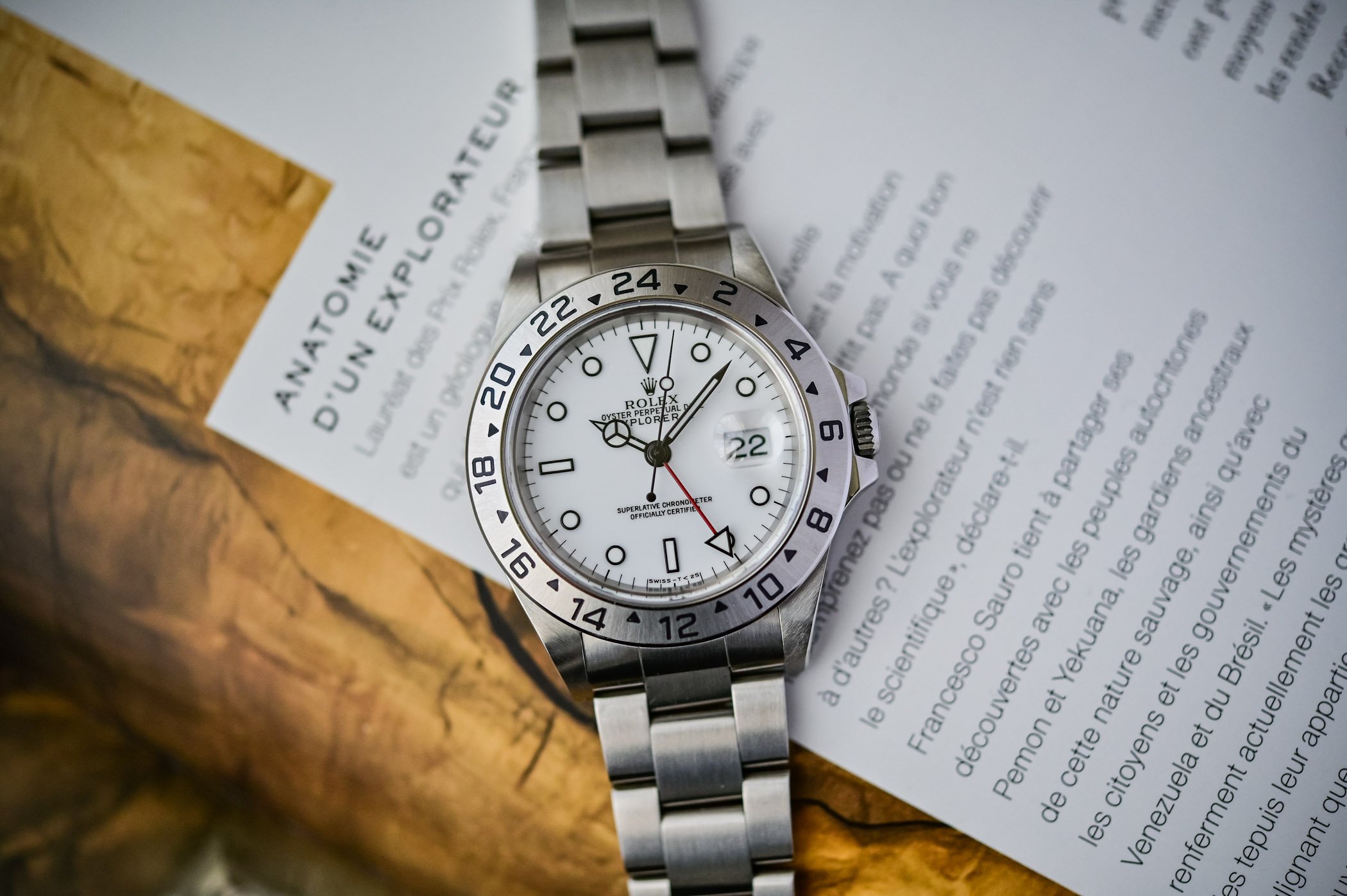
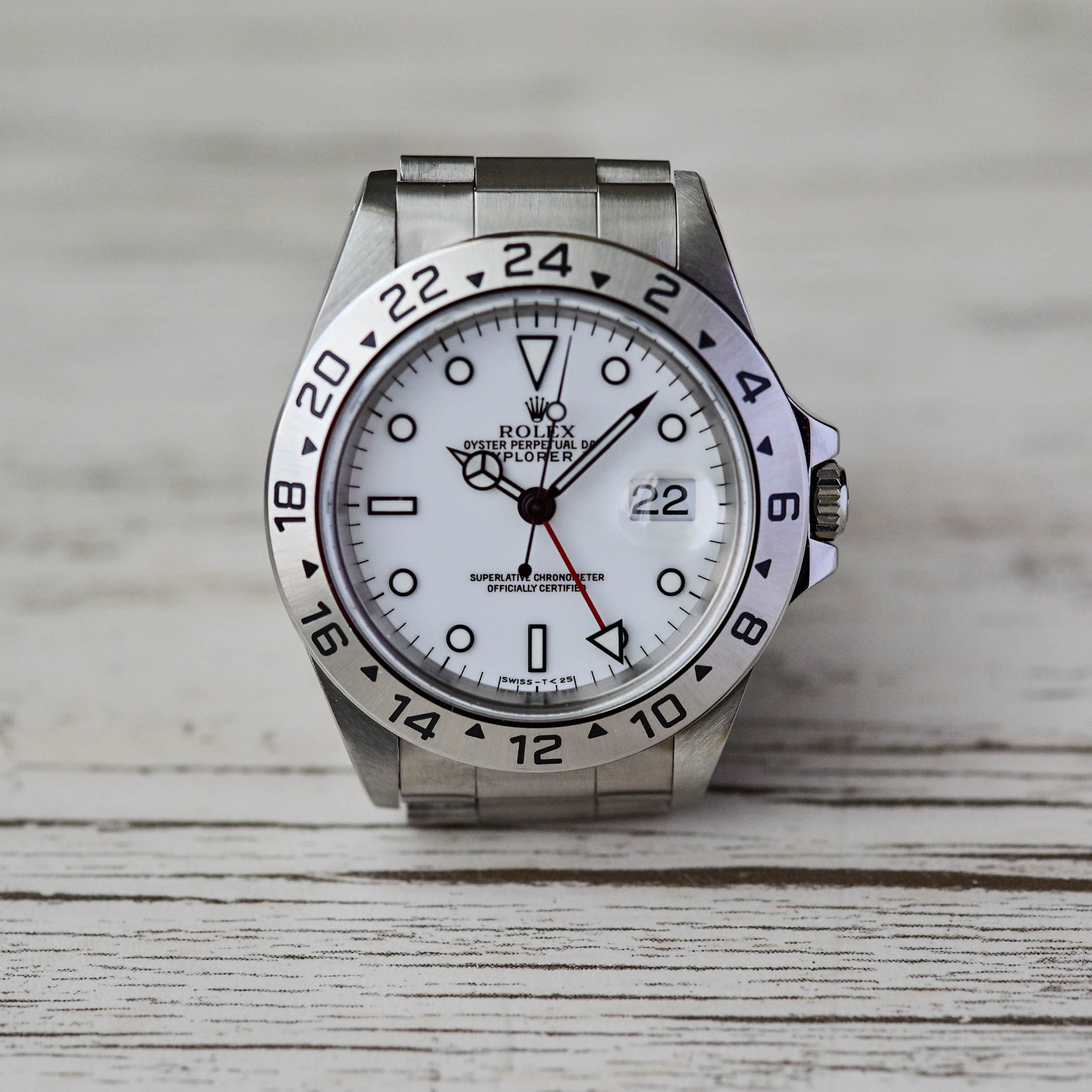
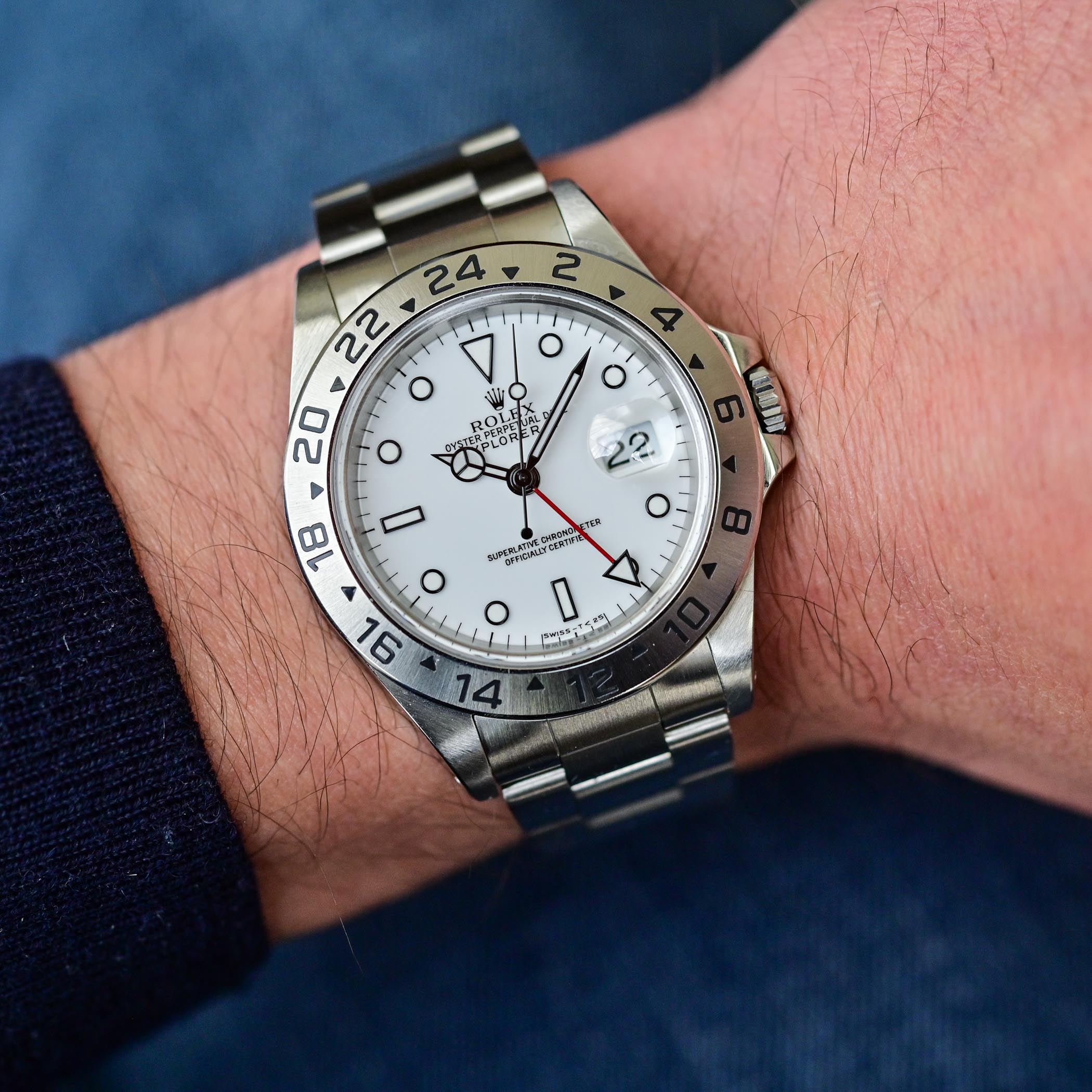
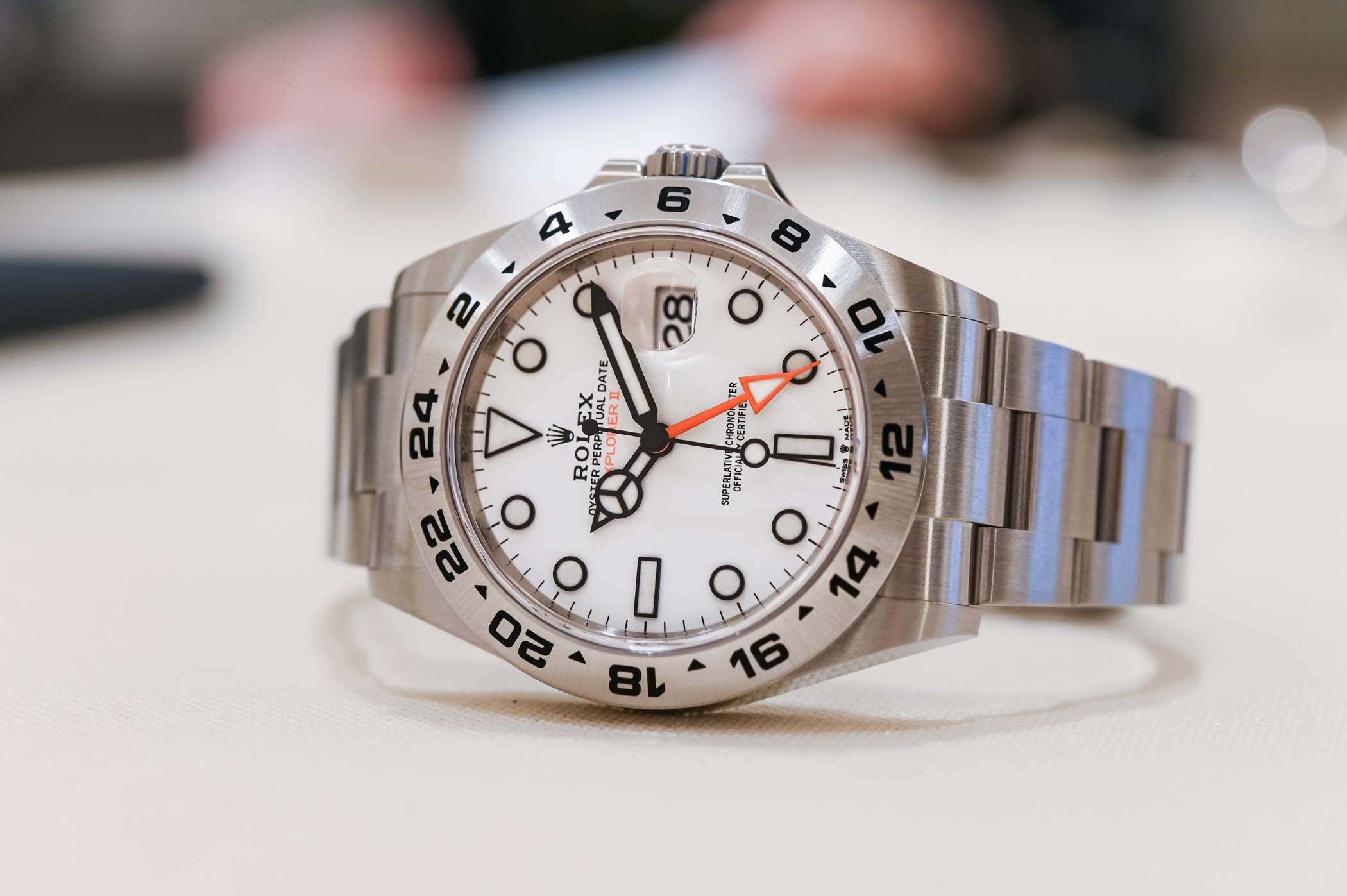
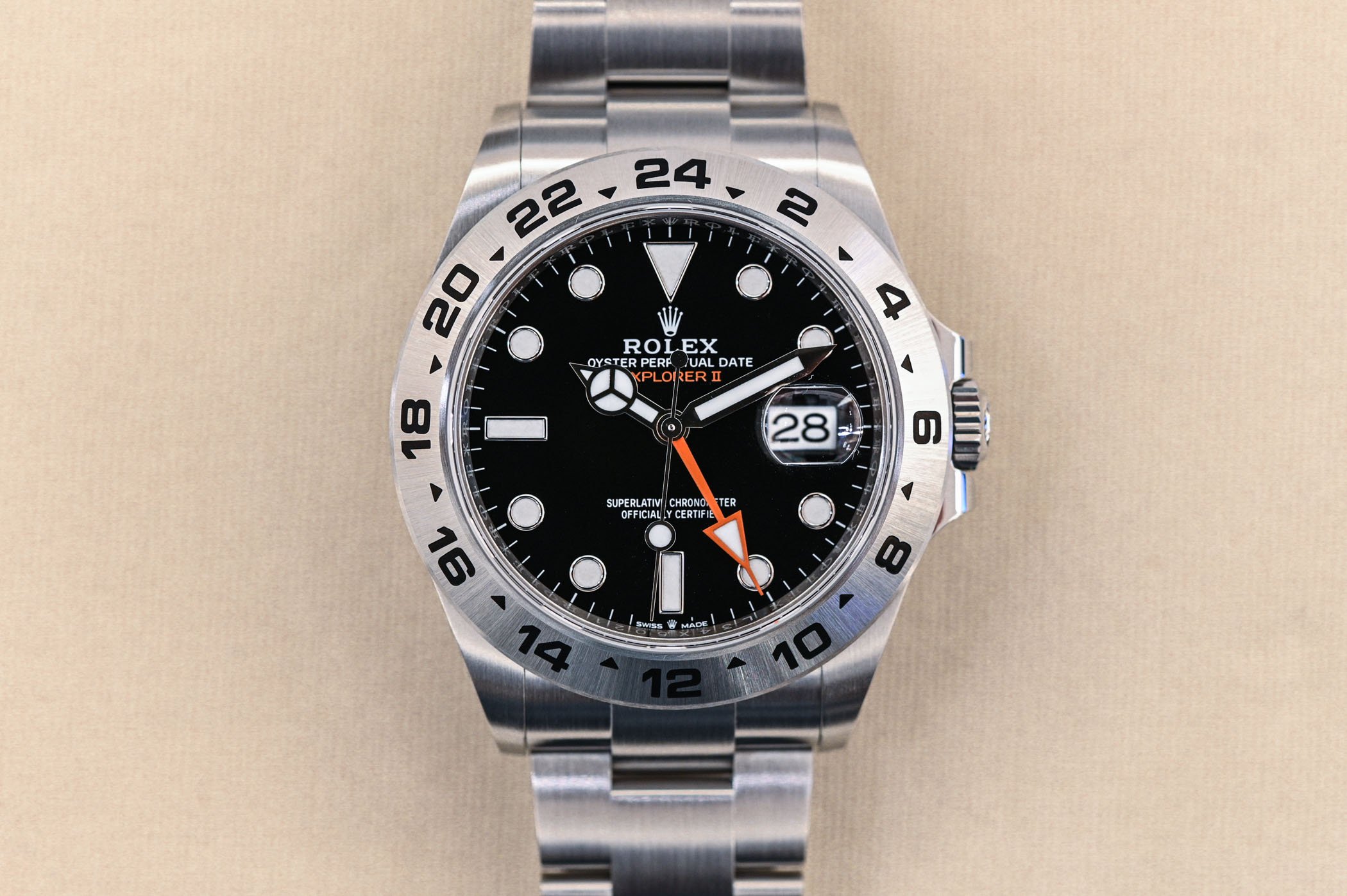
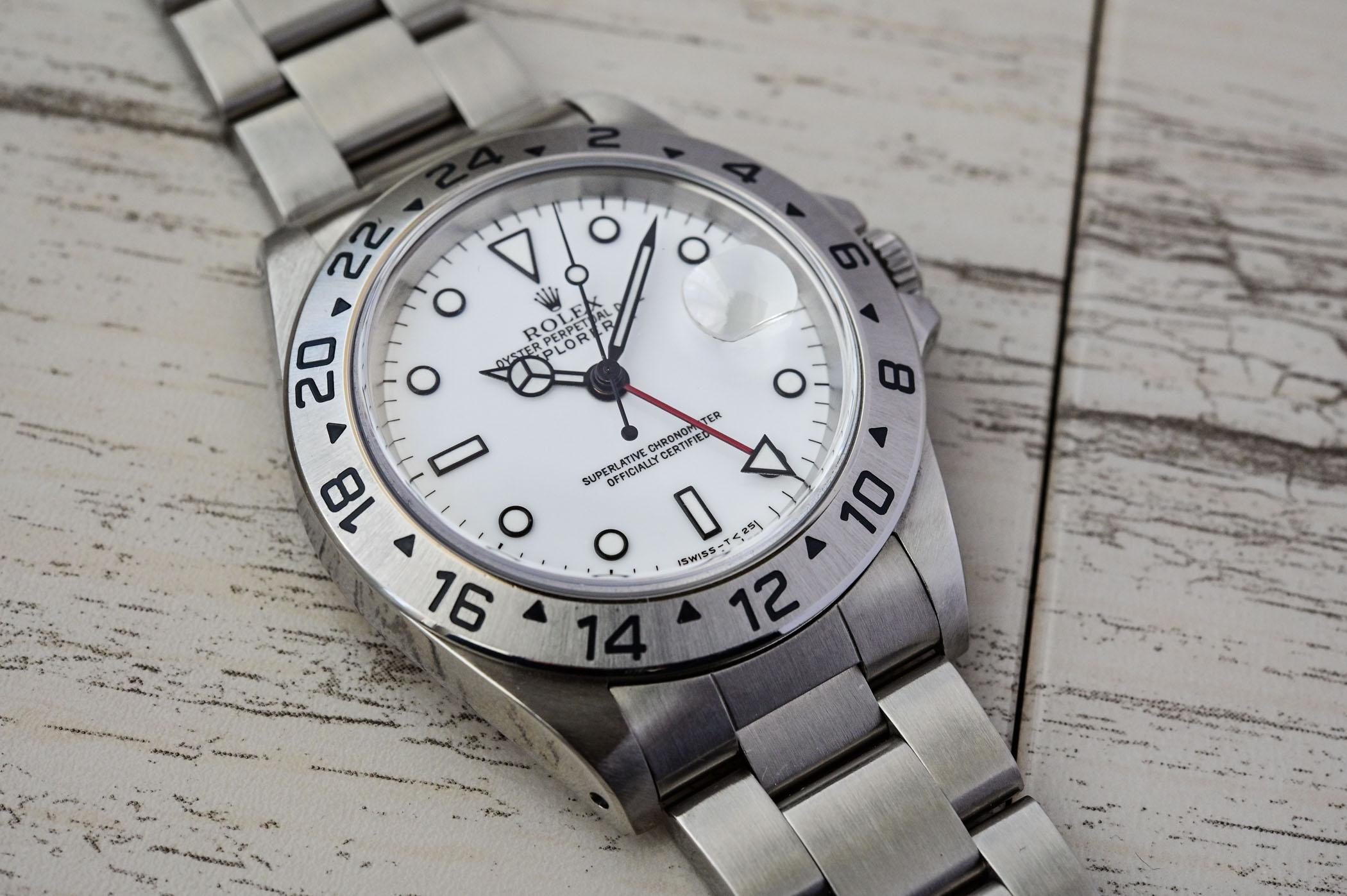
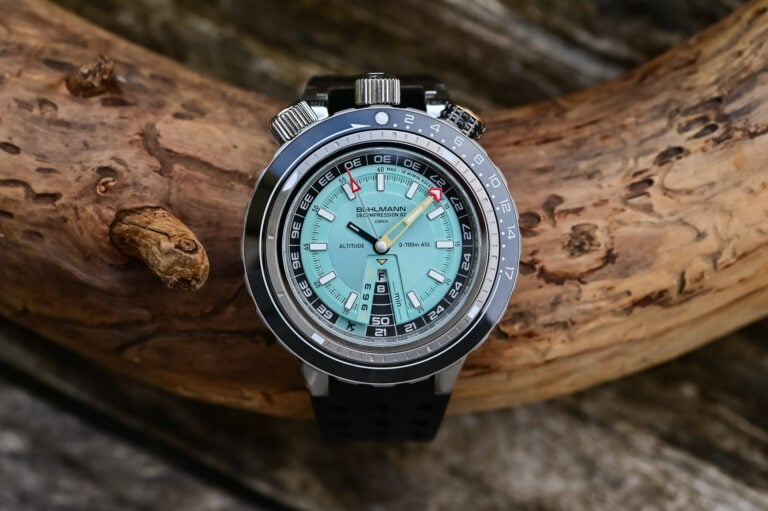
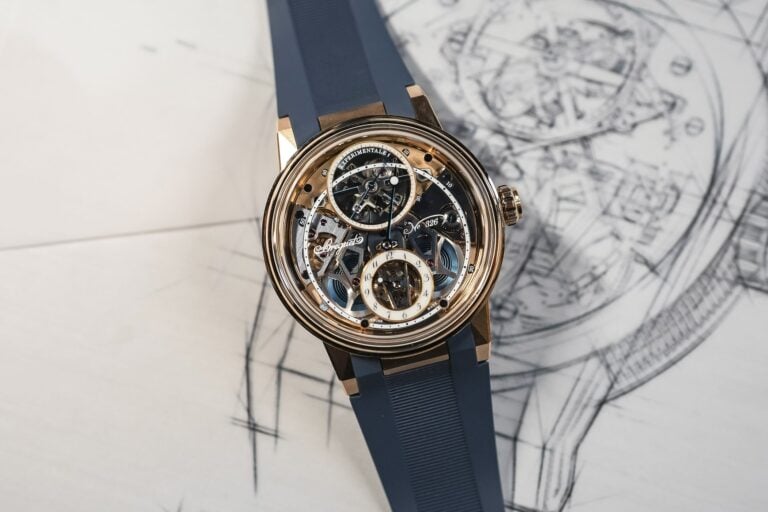
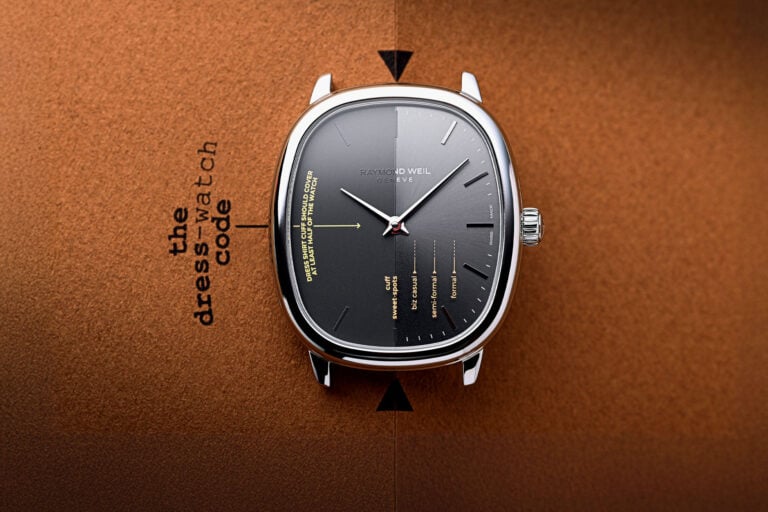
4 responses
16570 best Rlx ever!!
Something worth mentioning is Oliver Shepard’s 1655 that had the dial and hands replaced with that of a GMT-Master for his circumpolar expedition, because he found the regular 1655 hard to read. That led directly to the 16550 design afterwards.
@Doug It was such a rarity (I think only 3 were made) and custom design on Shepard’s request, so not a public release or even acknowledged design exercise by Rolex. However, you can clearly see the resemblance to the Explorer II. Was that a result of these custom prototypes or simply a natural evolution from the GMT design that was already well established? There’s certainly not a definitive answer. Thanks for mentioning it!
I would not be surprised if the outgoing reference 216570 becomes a collectible. Being that it’s the first and only modern reference to sport the Phantom hands of the original 1655.